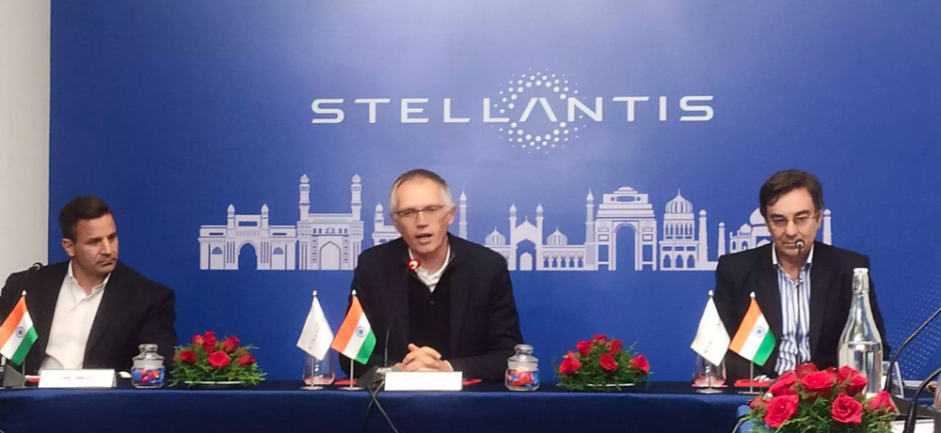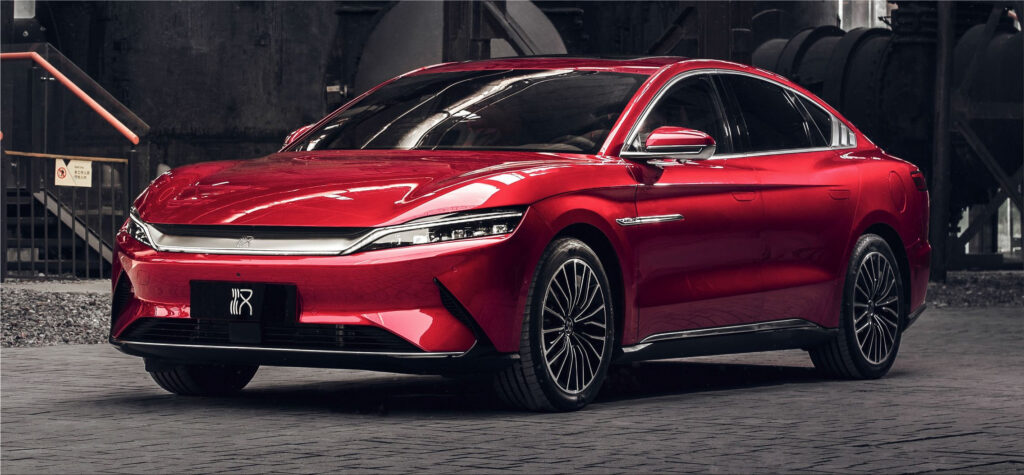Stellantis is investing heavily in EVs and plans to produce dozens of electric models in the coming decade.
CEO Carols Tavares revealed during a media roundtable in Chennai, India in November that the company can’t currently make affordable electric vehicles in Europe and is looking at lower-cost manufacturing in markets such as India.
Tavares commented that affordable battery electric vehicles were between five and six years away but added; “If India, with its low-cost supplier base, is able to meet the company’s quality and cost targets by the end of 2023, it could open the door to exporting EVs to other markets.”

Presently India accounts for a fraction of the carmaker’s global sales, but Tavares said the company is not chasing volume and instead wants to ramp up slowly and profitably. It plans to launch its first EV in the country – an electric model of its Citroën C3 – early next year, mainly targeting India’s aspirational middle class that has become a huge section of the country’s population.
Though Stellantis hopes that its launch of the Citroën will be a success, what has been driving revenue in India is the success of Jeep offering 4 products in its portfolio, Compass, Wrangler, Meridian, and the recently-launched Grand Cherokee. Citroën currently has a market share of less than 1% of the Indian passenger vehicle market.

Stellantis has been betting big on its C-Cube platform which was developed in India. It is also being deployed for the Latin American markets. “We have a long commitment in India. We should be one of the major key players in the (SUV) segment which is expected to grow in the upcoming years,” Tavares said.

Tavares also expressed his bullishness about India also as a software technology development hub. At the global level he has a serious concern about “growing fragmentation” in the world mainly in terms of country or region-specific industry incentive policies affect globalization. The end result could be high inflation and price increase, leading to the middle class “not be able to afford automobiles”. And that could pose a big hurdle for industry players in the electrification journey. “If an EV is not affordable, you are going to sell it only to the wealthy people, in limited volumes. And that is not going to help the planet. So, it will be marginal,” Tavares said.
Tavares is betting on India’s market to be “not at risk” for an economic slowdown, mindful that Europe is projected to be at the highest risk followed by the USA.
Also making India enticing is that American carmakers Ford and General Motors have exited the market, after failing to make money and break the dominance of Japan’s Suzuki Motor and South Korea’s Hyundai Motor.
Tavares’ bet on India comes as Stellantis refocuses its strategy in China where it now plans to be a niche player through its Jeep and Maserati brands, after it announced that its Jeep joint venture in the country will file for bankruptcy.
Stellantis earlier this year said it would end its venture in China with local partner Guangzhou Automobile Group (GAC) , just months after saying it would raise its stake to 75% from 50%.
The U-turn leaves the world’s No. 3 caretaker by sales with only limited Peugeot and Citroën production in China, which it has said could also be shut down, although it has yet to decide on that.
Tavares, has recently complained that political influence is growing by the day in China and has accused Stellantis’ joint-venture partner GAC of not acting in good faith. GAC has said it was “deeply shocked” by critical comments from Stellantis.
Stellantis full-year capacity utilization at its Chinese assembly plants has fallen to 13% in 2022 from 43% in 2017.
Chinese automobile manufacturers have embraced electrification faster than foreign competitors. While fully-electric cars make up an average of 5% of models foreign caremakers sell in China, they account for 30% of Chinese carmakers’ models.
Chinese EV makers like BYD are making inroads into Europe, aiming to win over buyers with more affordable EV cars after having already taken over the market against foreign rivals in China, the world’s biggest market for EVs. They are surpassing the long-dominant international brands by giving consumers what they want – EVs akin to smartphones on wheels where the emphasis is on connectivity and apps rather than performance. (For example; Chinese EV manufacturers like Nio have a built-in selfie camera in some models to appeal to younger buyers.)

So far Mercedes and BMW have held their appeal in China, partly because they retain a good image as aspirational brands, but also because Chinese carmakers have yet to turn their attention to producing luxury EVs.
As Stellantis appears to be exiting the Chinese for the most part, India is a ripe alternative for the company to manufacture vehicles that can be sold locally and arguably more important — exported to Europe and abroad. And as Citroën is the brand Stellantis is banking on to grow in India, it’s success may well be a driving factor in Tavares’ strategy of exporting EVs to other markets.

